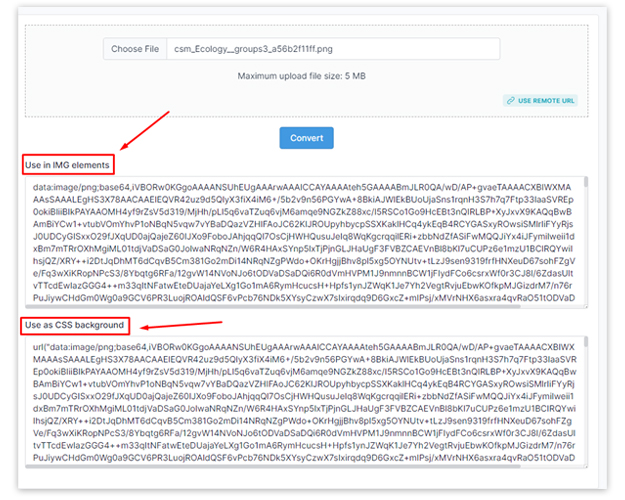
Image to Base64
Images are a vital part of modern digital experiences, from websites and mobile applications to email newsletters and social media posts. When working with images, it is often necessary to embed them into various platforms or transfer them between different systems. One efficient method for accomplishing this is by converting images to Base64 encoding. In this article, we explore the significance of converting images to Base64 and how it unlocks efficient image embedding and transfer capabilities.
Understanding Base64 Encoding
Base64 encoding is a binary-to-text encoding scheme that allows binary data, such as images, to be represented as ASCII text. It achieves this by converting binary data into a string of alphanumeric characters, consisting of letters A-Z (uppercase and lowercase), numbers 0-9, and the characters '+' and '/'. This ASCII representation enables images to be embedded directly into code or transferred as text data.
The Need for Image to Base64 Conversion
Embedding images in web pages or transferring them between systems can sometimes present challenges due to file dependencies, broken links, or platform-specific issues. Image to Base64 conversion addresses these challenges by converting the image file into a string of text that can be easily embedded or transferred without relying on external file references. It eliminates the need for separate image files and ensures that the image content remains intact during transmission.
Functionality of Image to Base64 Conversion
Image to Base64 conversion involves encoding an image file into Base64 format using various tools and programming techniques. Numerous online tools and libraries provide easy-to-use interfaces for converting images to Base64. These tools typically accept an image file as input and generate the corresponding Base64 string as output, which can be directly utilized in HTML, CSS, JavaScript, or other code snippets.
Image Distribution and Sharing
Image to Base64 conversion simplifies the distribution and sharing of images. When working with web-based applications or email newsletters, for example, you can include the Base64-encoded image directly within the HTML or CSS code, eliminating the need for external image file attachments. This ensures that the images are displayed correctly across different email clients or when sharing code snippets with collaborators or clients.
Usefulness of Image to Base64 Conversion
a) Efficient Embedding and Transfer: Converting images to Base64 eliminates the need for separate image files, reducing the number of HTTP requests required to load a webpage. Embedding images directly into code or stylesheets enhances performance by minimizing network latency and improving page load times. Additionally, transferring images as Base64-encoded text simplifies the transfer process, as the image data can be transmitted within the same context as other code or text-based content.
b) Improved Portability and Cross-Platform Compatibility: Base64-encoded images are platform-independent and can be embedded or transferred across different systems without concerns about file dependencies or compatibility issues. The encoded image can be easily incorporated into HTML, CSS, or JavaScript code, ensuring consistent image rendering across various platforms, devices, and browsers.
c) Data Consolidation and Reduced File Size: By converting images to Base64, the data is consolidated within the code or text file itself. This consolidation eliminates the need to manage multiple image files separately. Additionally, Base64 encoding may result in a slight increase in file size due to the encoding process, but this is often offset by the elimination of external image file dependencies, resulting in more efficient data transfer overall.
How Can You Use This Feature?
To use this tool you need to choose your image from your device or also you can load an image from the internet by url.

After selecting the image you need to press the convert button.

Then you will see the result like this.

You can use these as IMG elements or Use as CSS backgrounds. That’s it. Our tool is easier to use than others.
Limitations of Image to Base64 Conversion
It is important to consider the limitations of an image to Base64 conversion. Base64 encoding increases the file size of the image, as it requires additional characters to represent the binary data. This can impact page load times, especially for larger or numerous images. Additionally, Base64-encoded images cannot be cached or loaded asynchronously like external image files. Therefore, it is recommended to use an image to Base64 conversion judiciously, considering the specific requirements and trade-offs of each use case.
Conclusion
Image to Base64 conversion offers a practical solution for efficient image embedding and transfer. By encoding images into Base64 format, designers and developers can embed images directly into code, reducing the reliance on separate image files and improving performance. The portability, cross-platform compatibility, and consolidated data management provided by image-to-Base64 conversion enhance the versatility and efficiency of working with images across various digital platforms. Embrace the power of the image to Base64 conversion and unlock the full potential of your image integration and transfer capabilities.











